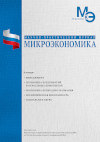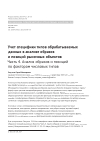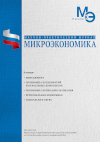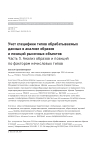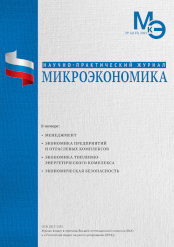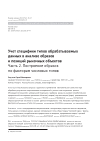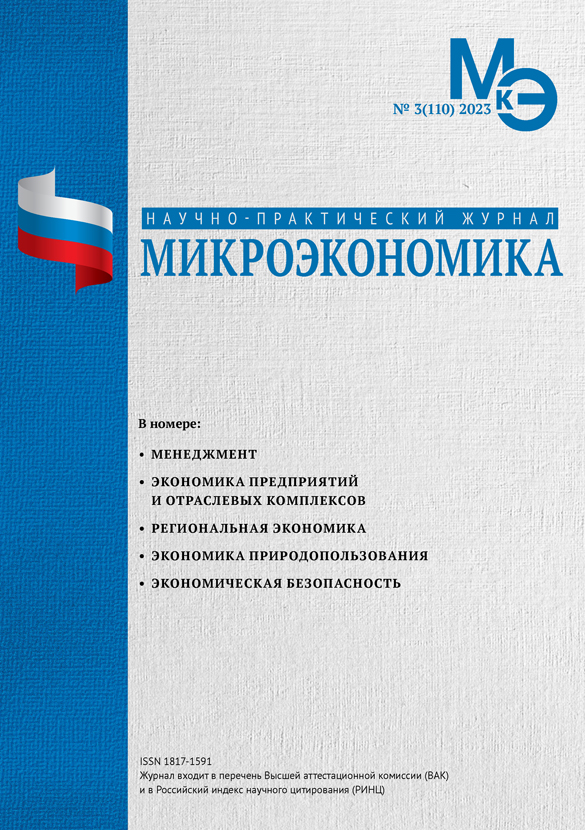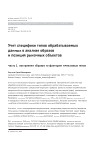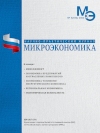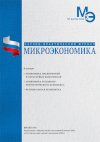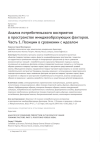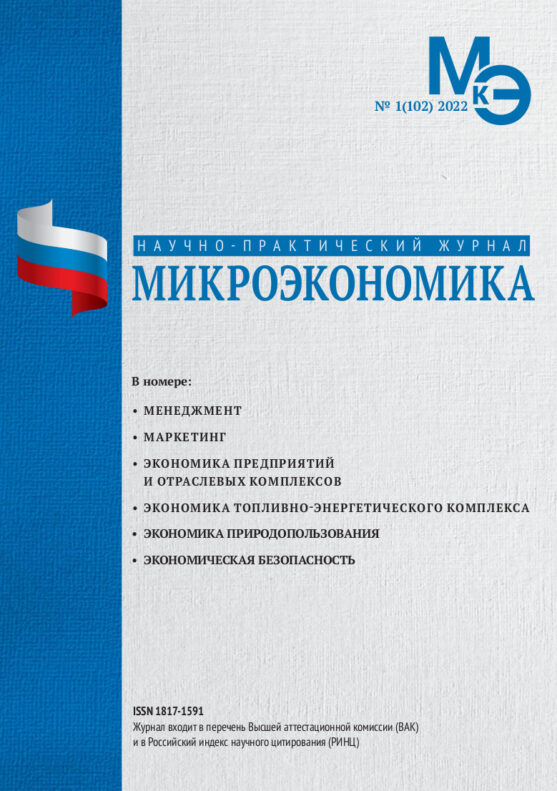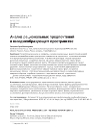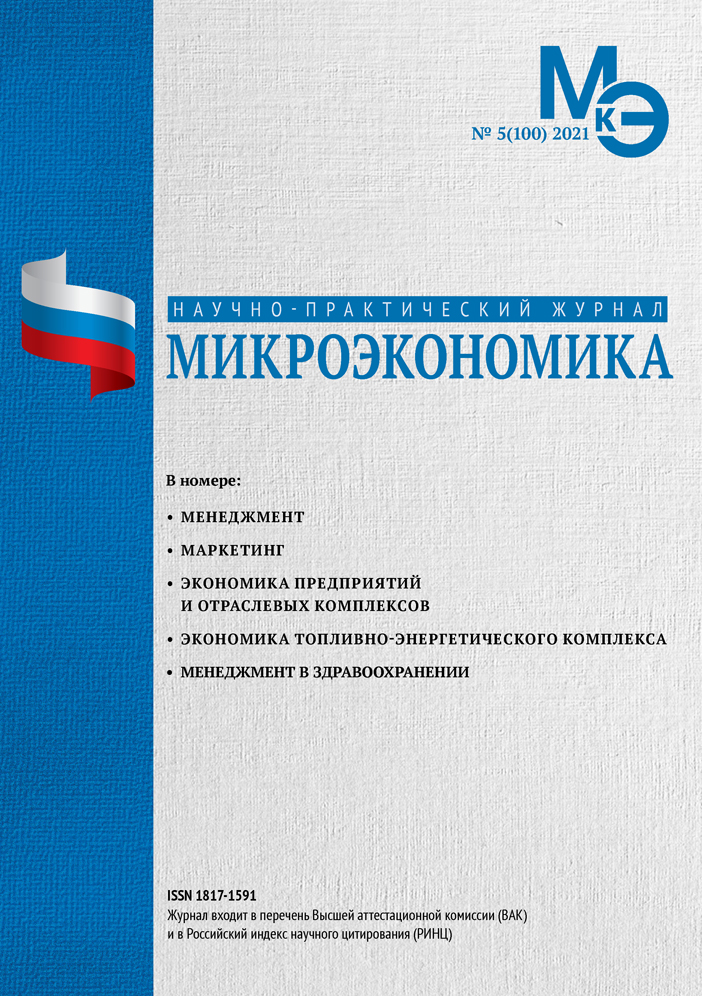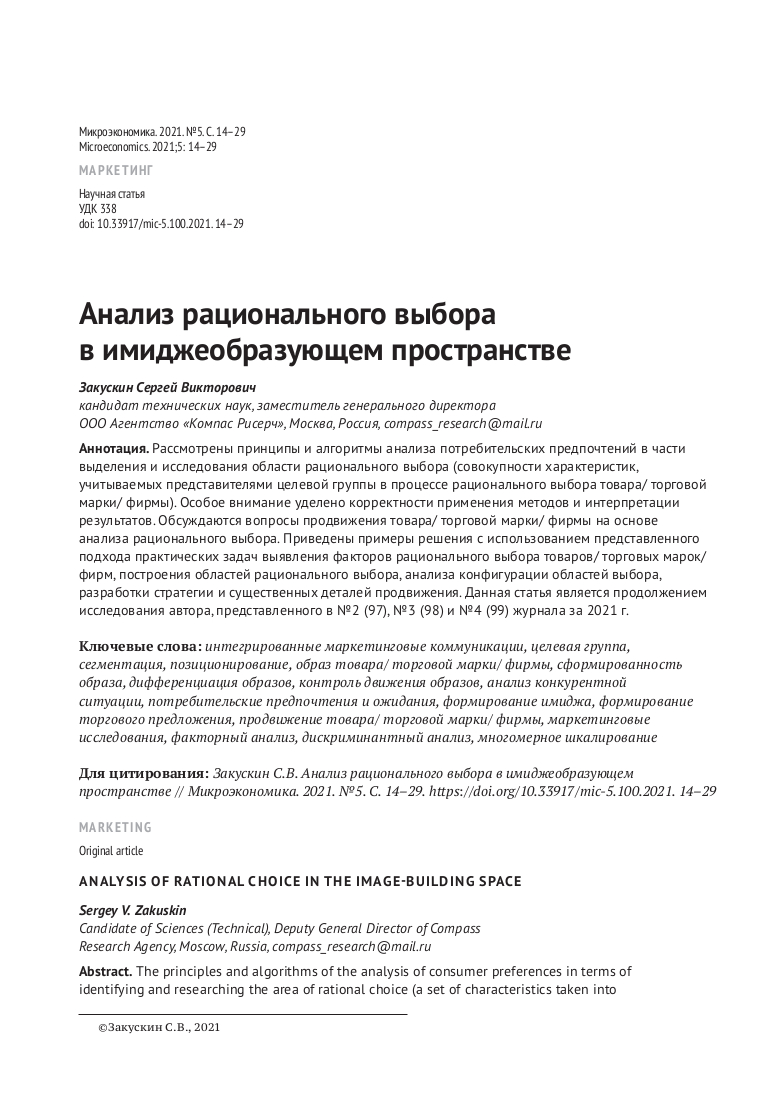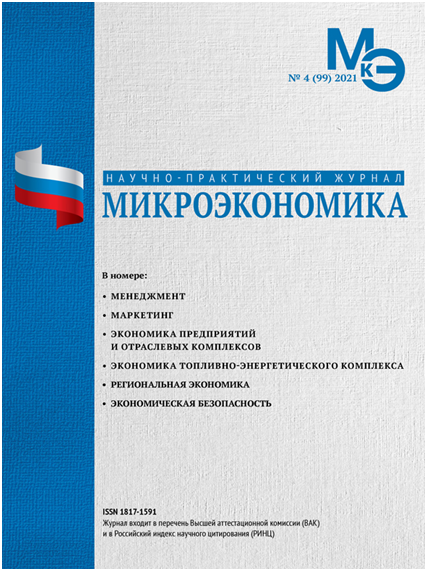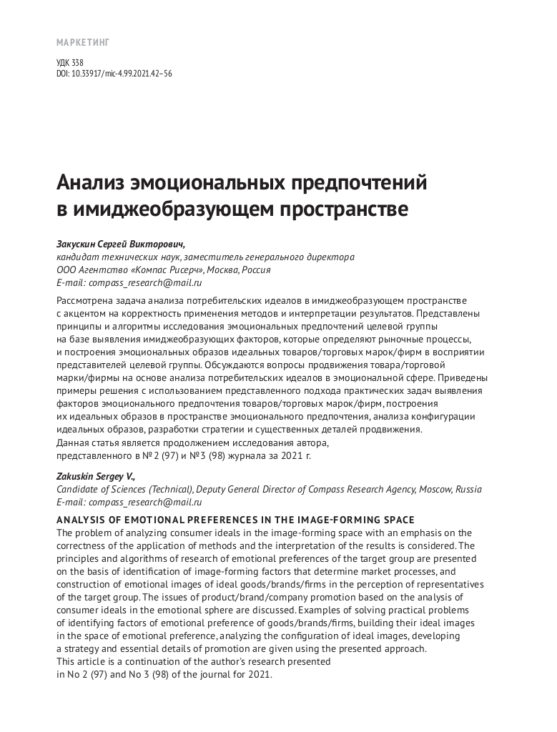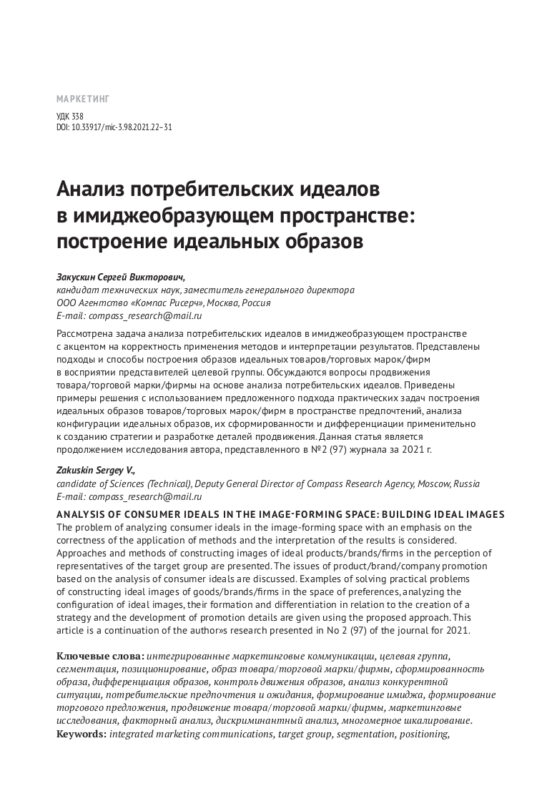Type data consideration in market objects analysis. Part 4. Building images based on factors of numeric types
DOI: 10.33917/mic-2.115.2024.35-50
The issues of the correct application of mathematical statistics in the processing of marketing research results, taking into account the type of data obtained, are considered. The parameters of the configuration of images of market objects (goods/ trademarks/ firms) in the space of image-forming factors of interval type, characterizing the location, formedness and differentiation of images, are discussed. Examples of the analysis of images of market objects in the space of interval type factors (both initial and quantified) are given. Possible conclusions about the configuration of images are considered, practical recommendations on the selection of target segments and determining the optimal position for a product / brand/ company are discussed.
References:
1. Zakuskin S.V. Type data consideration in market objects analysis. Part 1. Building images based on factors of non-numeric types. Microeconomics. 2023;5:23–38 (In Russ.).
2. Zakuskin S.V. Type data consideration in market objects analysis. Part 2. Building images based on factors of numeric types. Microeconomics. 2023;6: 29–47. (In Russ.).
3. Zakuskin S.V. Type data consideration in market objects analysis. Part 3. Analysis of images and positions by factors of non-numeric types. Microeconomics. 2024;1:35–54. (In Russ.).
4. Zakuskin S.V. Analysis of consumer ideals in the image-forming space: building perfect images. Microeconomics. 2021;3:22–31. (In Russ.).
5. Zakuskin S.V. Analysis of market images formedness. Creative Economics. 2020;6:1115-1136. (In Russ.).
6. Zakuskin S.V. Analysis of market images differentiation. Creative Economics. 2020;7:1447-1466. (In Russ.).
7. Zakuskin S.V. Integration of marketing communications based on the analysis of consumer preferences. Russian entrepreneurship. 2018;19(6):1913-1937. (In Russ.).


